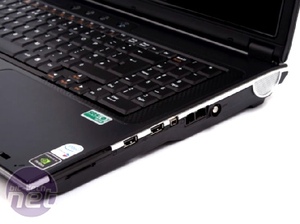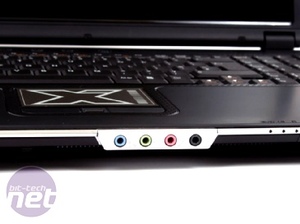
General Performance
To gauge general performance we use a range of different programs that run an automated set of processes and output several results in seconds. We perform each test three times in order to get a good groundwork, then we average these times to try and get a figure which is the most fair and representative.With the X770 X9000-8800, we’re in a little bit of a quandary because, while the X770 should perform really well here for image editing and general everyday tasks thanks to the GeForce 8800M graphics card and 2GB DDR2 memory, we don’t have a fully established back catalogue that we can compare the results to.
Don’t worry though, that’s only a minor problem and we’ll be building a list of comparative laptops as we move forward – today the Xtreme 770 X9000-8800, tomorrow the world (of gaming laptops)!
Adobe Photoshop Elements 4.0
For our Photoshop Elements test, we used a selection of 400 three megapixel photographs taken in a variety of surroundings using the batch file processing function in the Elements Editor. We performed all of the auto fixes, including Auto Levels, Auto Contrast, Auto Colour and Sharpen before resizing the image to 640x480 and saving as a high quality JPEG.Normally, we’d have a big graph here, but since we’re without a suitable comparison for the X770 right now, we’ll have to go without.
As it is, the X770 X9000-8800 took an average of 355 seconds to process over 400 photos, which is by no means bad for a laptop.
File Compression & Encryption:
Our file compression and decompression tests were split into two halves to cover a broad spectrum of performance. The first test we ran was to compress and encrypt a MPEG-2 source file with the highest quality compression ratio. Secondly, we compressed and encrypted the folder of 400 photographs used in our Photoshop Elements test with the same compression settings.The X770 managed an average of 141 seconds in the first large compression test, with the results for each iteration of this test deviating by only a second or so. The second compression test, which is a compression of the photos from the previous tests, took an average of 117 seconds to complete and were similar in that they deviated very, very little from this time.
All in all, this seems like a mostly reasonable result for the X770, but it is difficult to present anymore information without a basis for comparison to other similar notebooks, though that will grow in the future. If you’re looking for relative performance, you can always check out one of our CPU or motherboard reviews.
File Decompression & Decryption:
The two RAR archives created during the compression and encryption tests were then decompressed and decrypted. If you’re an online gamer or are often installing new games then this result will be especially important if you don’t want to spend too long unzipping all those patches.Either way, the decompression of the video file took an average of just 16 seconds, which is pretty admirable. Again, it’s hard to give a more detailed analysis, but results from motherboard reviews using a similar methodology do provide a little comparison.
Decompressing the smaller file takes longer than the larger file, because there is a lot more work to do and in this instance the test took an average of 28 seconds, with pretty much no deviation across the three separate tests.
Xvid Encoding:
We tested video encoding performance using VirtualDub-MPEG version 1.6.15 and a multithreaded version of the Xvid codec, along with the LAME MT MP3 encoder for encoding audio. We did a two-pass encode of a 15-minute 276MB digital TV recording with a target file size of 100MB.This test always takes the longest to complete, with an average of 724 seconds on the clock when the results were in..
It’s hard to gauge the exact implication of the results gathered above, but a rough comparison to desktop systems reviewed using a similar method in the past indicate that the results are pretty good – though how they stack up against future gaming laptops reviews remains to be seen. However, given that the rock Xtreme 770 uses the current fastest mobile GPU and the current fastest mobile CPU on the market, it’s hard to believe that things are going to get much faster than this.

MSI MPG Velox 100R Chassis Review
October 14 2021 | 15:04












Want to comment? Please log in.